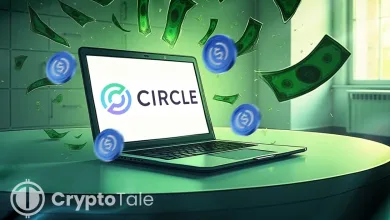Kiyosaki Predicts Market Crash, Sets Bold Targets for Gold and Bitcoin

- Robert Kiyosaki warns of a market crash but says he is buying, not selling assets.
- Kiyosaki predicts Bitcoin at $250K and gold at $27K by 2026, citing scarcity and network value.
- He criticizes the Fed and Treasury for printing money, urging investors toward real assets.
Robert Kiyosaki, the author of Rich Dad Poor Dad, has warned of an impending financial crash but says he isn’t selling. The investor shared his outlook on X on Sunday, calling it a “CRASH COMING” while outlining ambitious price targets for gold, Bitcoin, and other assets.
He predicted that gold could hit $27,000, Bitcoin could reach $250,000, and silver could climb to $100 by 2026. Kiyosaki also projected Ethereum could trade at $60,000, citing its role in powering stablecoin networks.
He explained that his predictions draw from economic principles, Gresham’s Law, and Metcalfe’s Law. He believes these principles guide how real and digital money behave in global markets.
Kiyosaki Points to ‘Fake Money’ Problem
In his post, Kiyosaki criticized the U.S. Treasury and Federal Reserve, accusing them of breaking what he called “the laws of money.” He claimed that the agencies print “fake money” to cover government spending, worsening the country’s debt position.
“Unfortunately, the US Treasury and Fed break the laws,” he wrote. “They print fake money to pay their bills. If you and I did what the Fed and Treasury are doing, we would be in jail.”
Kiyosaki linked his gold investment journey to 1971, the year President Richard Nixon ended the gold standard. He argued that this move violated Gresham’s Law, which says bad money drives good money out of circulation. According to him, the end of the gold peg led to the rise of “fake money,” prompting investors to seek real assets like gold and Bitcoin.
“The USA is the biggest debtor nation in history,” he said. “That’s why I keep buying gold, silver, Bitcoin, and Ethereum even when they crash.”
Kiyosaki added that he owns two gold mines and silver mines, emphasizing his belief in holding physical commodities as part of his investment approach.
Gold, Bitcoin, and Ethereum as Future Stores of Value
Kiyosaki’s forecast for Bitcoin reaching $250,000 aligns with his long-standing bullish stance on the cryptocurrency. He has repeatedly said that digital assets will outperform traditional markets in the coming years.
He described Bitcoin as “real money.” He argued that the cryptocurrency’s decentralized structure makes it resistant to manipulation by governments or banks.
On Ethereum, Kiyosaki pointed up Metcalfe’s Law, which says that a network gains value as more people join it. According to him, Ethereum abides by this rule since it serves as the foundation for the majority of stablecoins. He credited Tom Lee, the managing partner at Fundstrat Global Advisors, for helping him shape his Ethereum price outlook.
Related: Kiyosaki’s Crash Alert Sparks Fear Across Crypto Markets
Kiyosaki’s comments follow his earlier warnings about mounting U.S. debt and economic instability. He advised investors to protect wealth with gold, silver, and Bitcoin, warning that global debt could lead to a financial meltdown.
He often expressed skepticism toward traditional saving strategies, often repeating his phrase “savers are losers.” He argues that inflation and money printing erode the value of fiat currency savings, making real assets more valuable over time.
Despite frequent criticism from economists, Kiyosaki continues to advocate for self-reliance and diversification across commodities and cryptocurrencies. His latest message reinforces his belief that while a crash may come, those who hold tangible and digital assets could see “massive riches ahead.”




